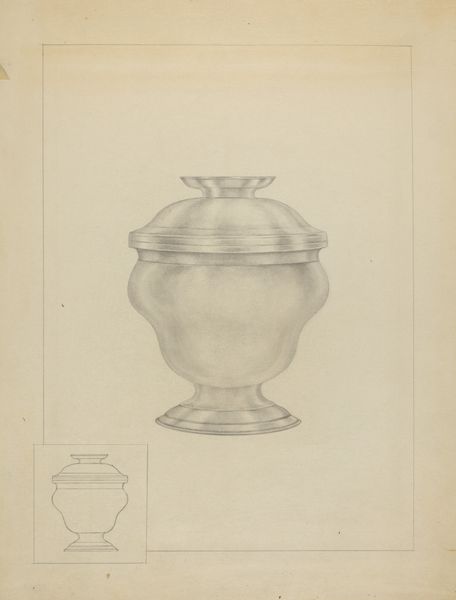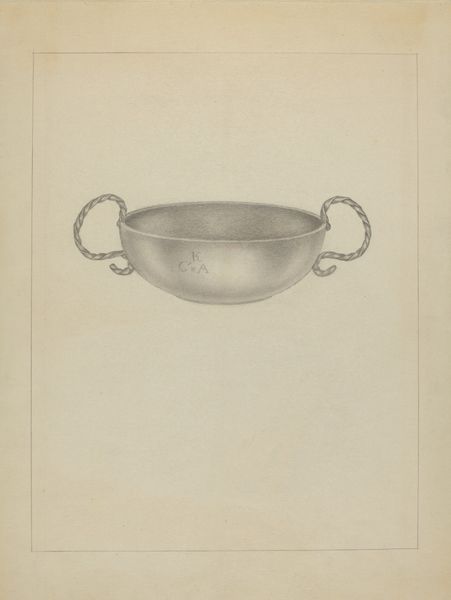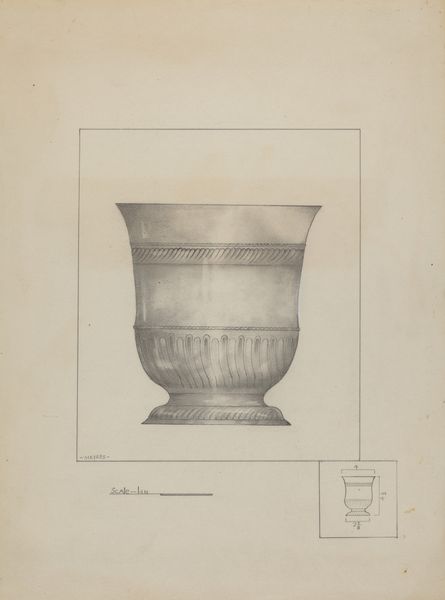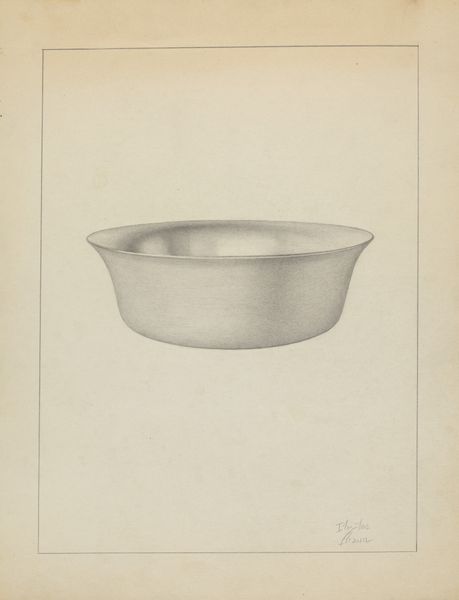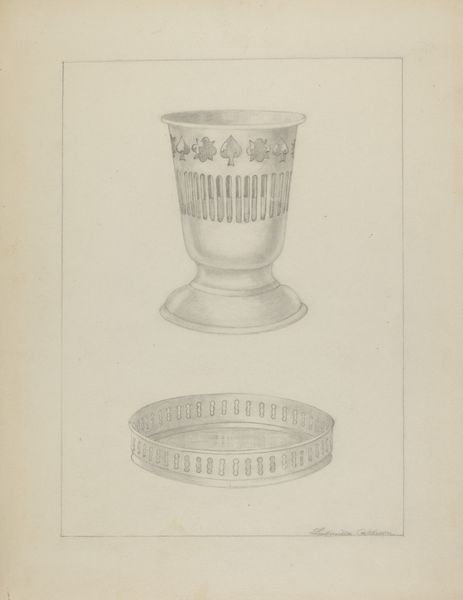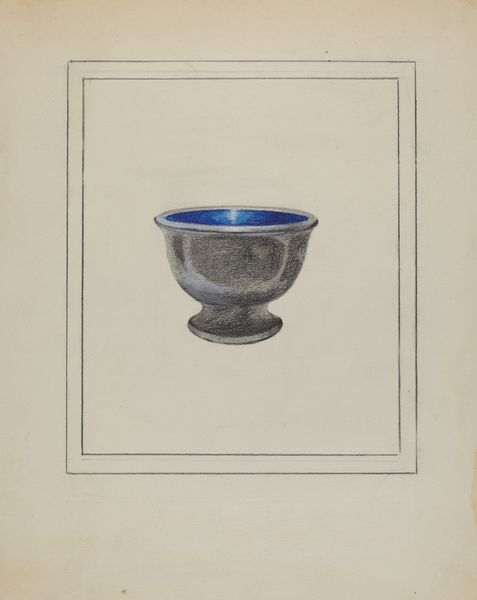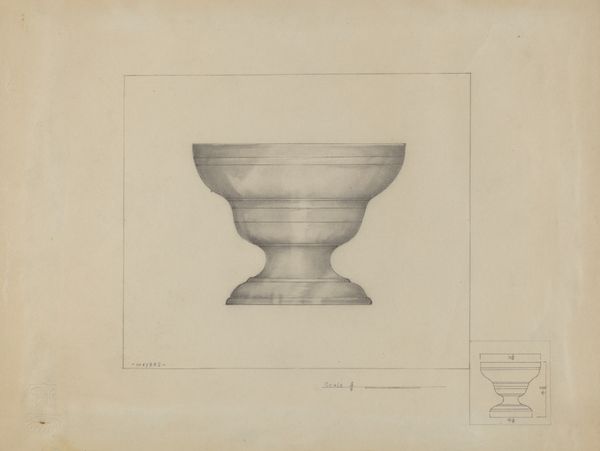
drawing, pencil, graphite
#
pencil drawn
#
drawing
#
charcoal drawing
#
form
#
pencil
#
line
#
graphite
#
pencil work
#
realism
Dimensions: overall: 30 x 22.8 cm (11 13/16 x 9 in.) Original IAD Object: 3" high; 6 1/4" wide
Copyright: National Gallery of Art: CC0 1.0
Curator: I find this drawing, "Silver Bowl" by Hans Westendorff, made around 1936, rather enchanting, what's your initial take? Editor: Intricate! Look at that dedication to form – the details practically scream the hand of the craftsman, laboring over every curve and decorative flourish. Curator: Absolutely! It feels so tangible, doesn’t it? Westendorff manages to give this object, likely envisioned as silver, such weight and presence. The use of graphite and pencil suggests this was not merely a study, but also a way of envisioning the object’s potential essence. Editor: True. The object seems to speak volumes about the artist’s understanding of materiality. But what fascinates me further is the means of production behind an object such as a silver bowl—who is pouring the silver? Where are they doing it? What's the silver going to carry once done? Curator: Those are valid observations. And looking closely, it feels more than functional. I feel some inherent symbolism lurking behind such meticulous renderings of idealized forms, and I imagine some sort of utopian yearning during the time. Editor: Symbolism maybe... or it might be an interesting study in consumption; thinking about function definitely offers avenues of thinking around use, value, and the economy, perhaps highlighting the culture it inhabits as much as its artistic value. Curator: Fair enough. What do you make of those annotations scattered around the bowl's sketch? The detailed borders feel like glimpses into another bowl possibility that perhaps never saw daylight. Editor: It's fascinating isn't it? Like hidden layers in the design, a quiet rebellion maybe; he could be undermining traditional divisions of high art and functional design by displaying every detail, no matter how mundane, in plain sight. Curator: A subversive silver bowl! Who knew? Editor: Indeed! It shows that behind what appears purely aesthetic, there lies complex work and potential resistance against conventional assumptions. Curator: Thinking about it this way provides a new respect for objects normally deemed everyday; it feels appropriate given all our discussions today about the importance of material processes involved!
Comments
No comments
Be the first to comment and join the conversation on the ultimate creative platform.
